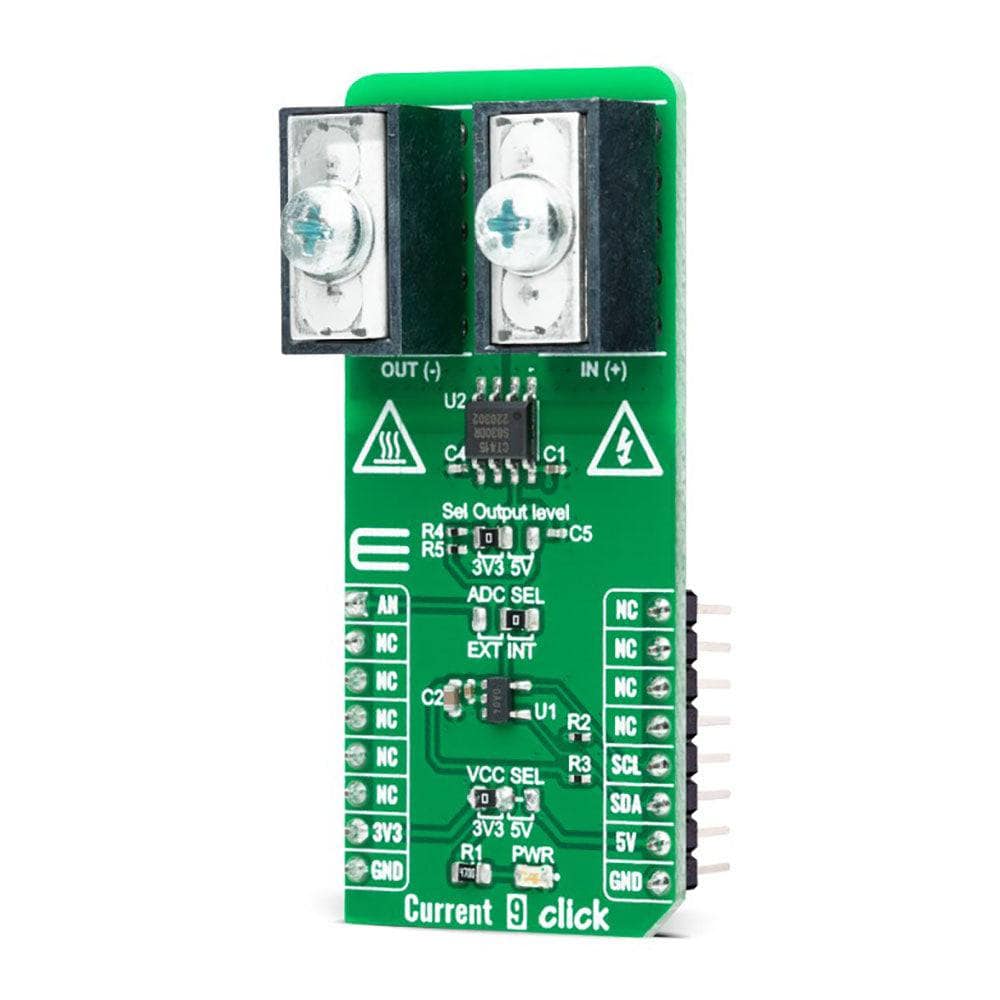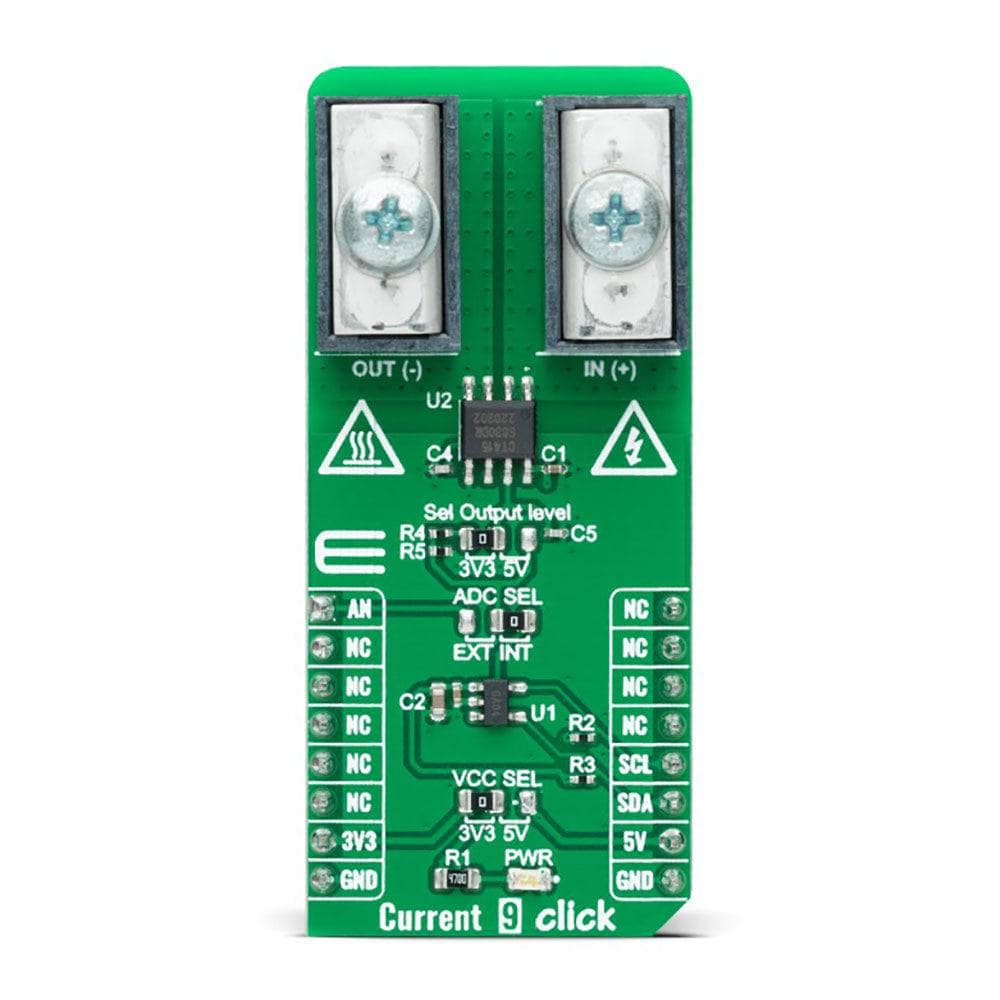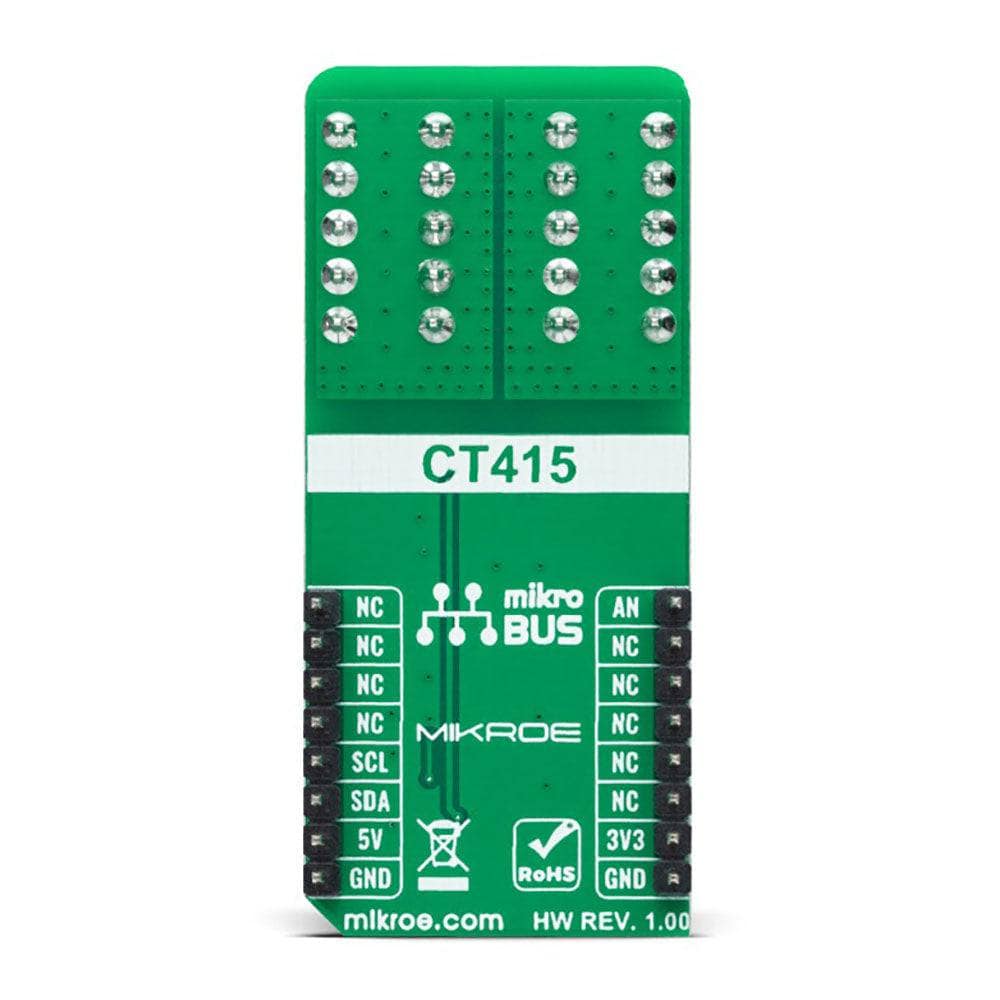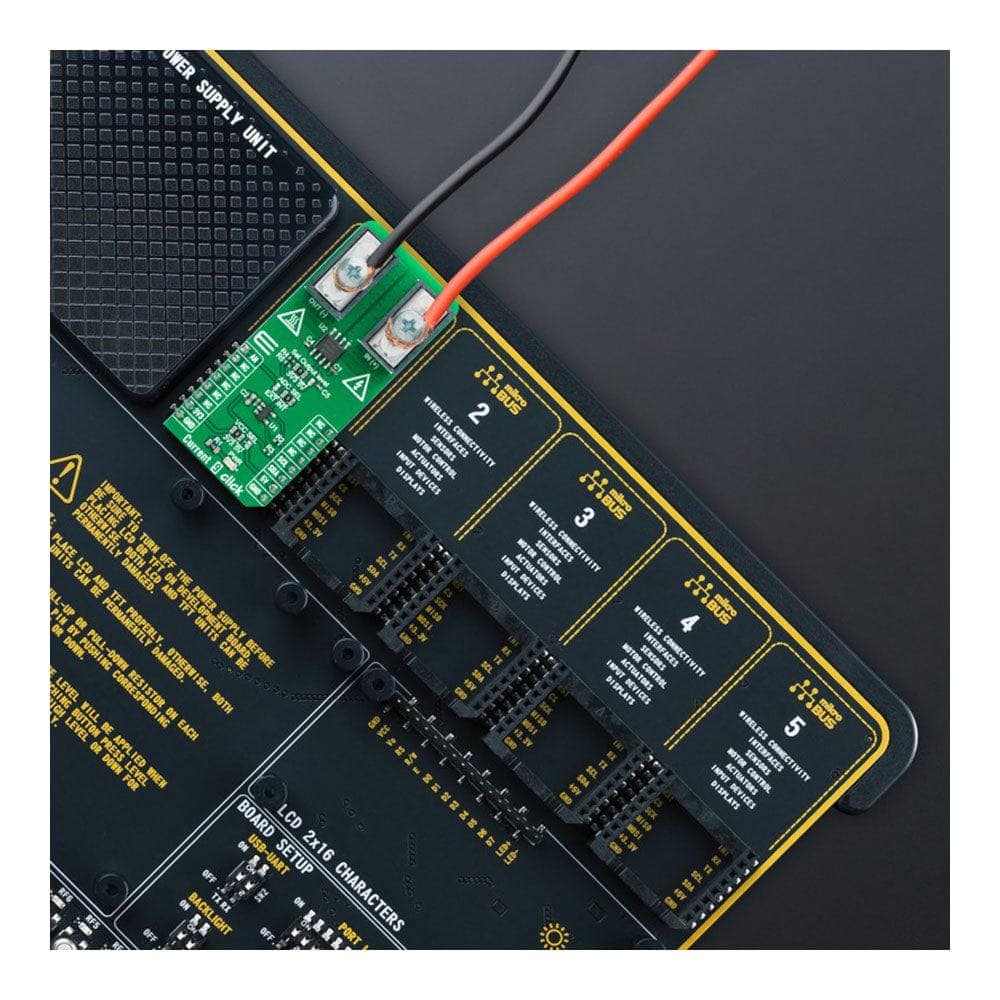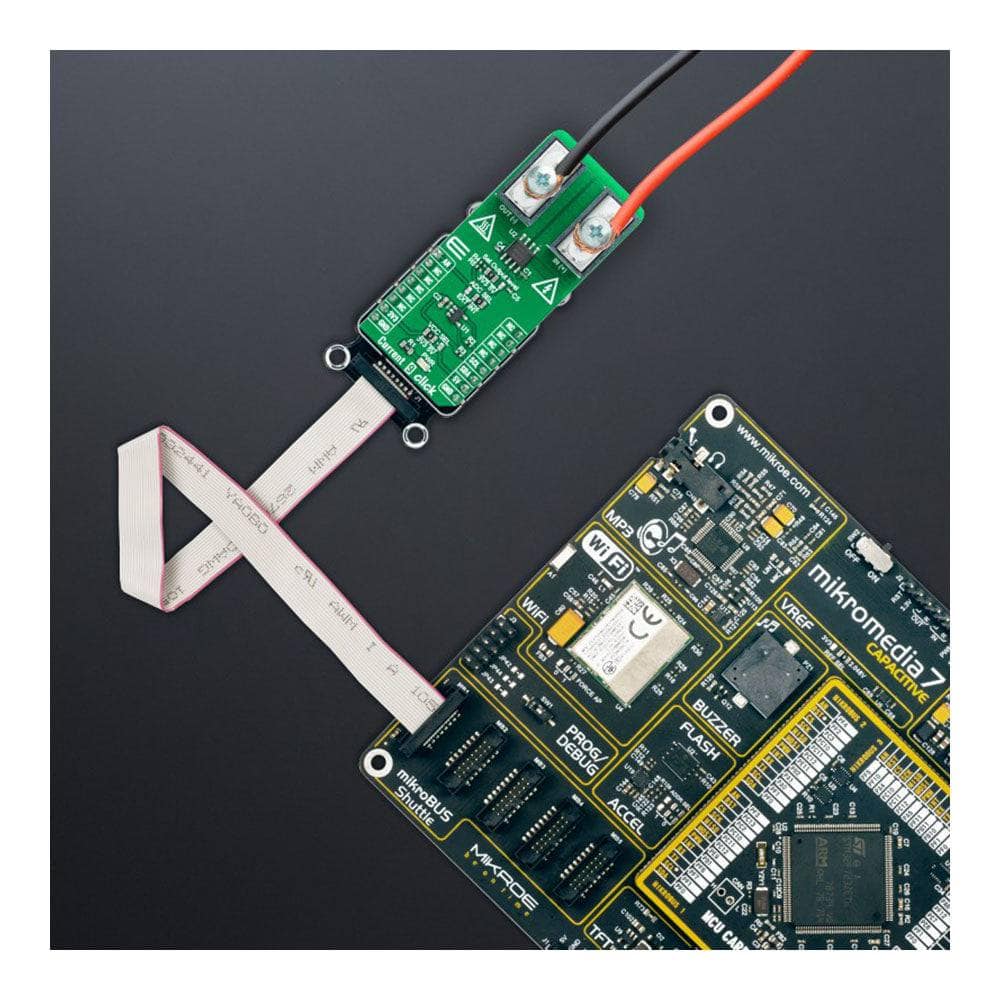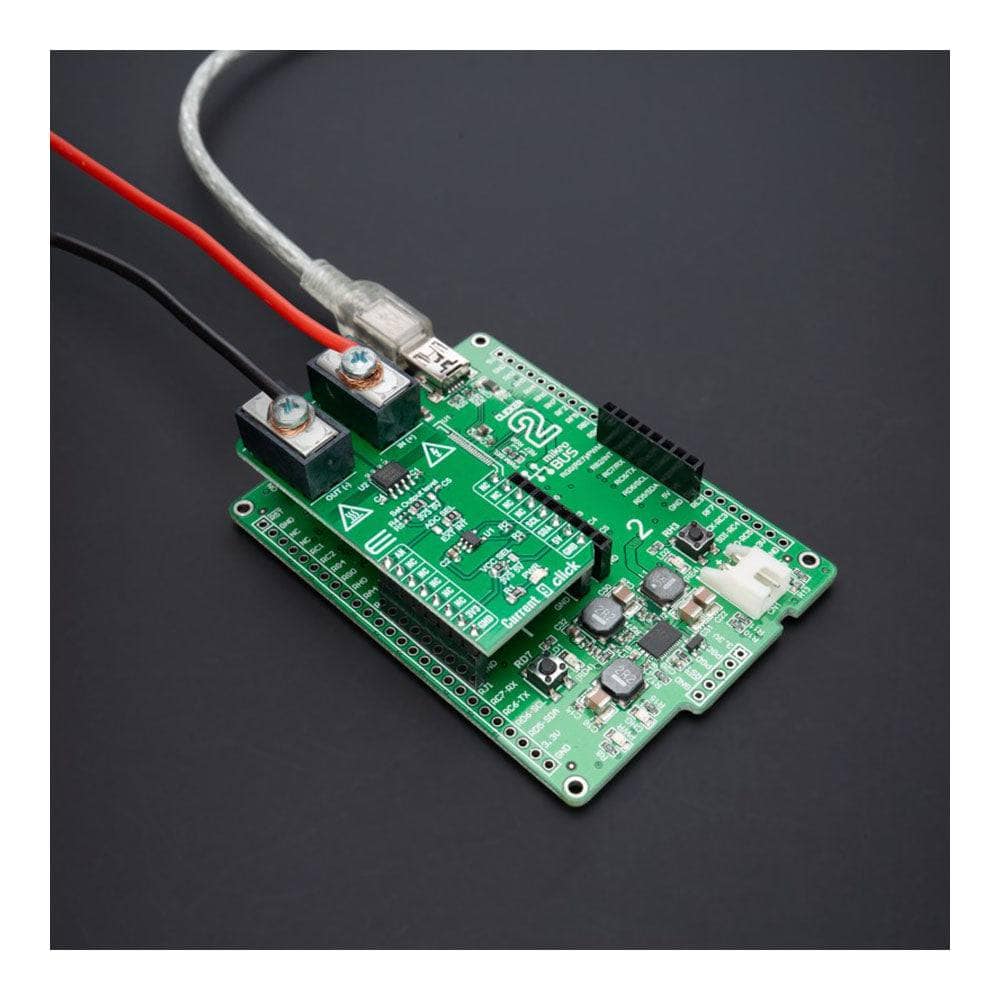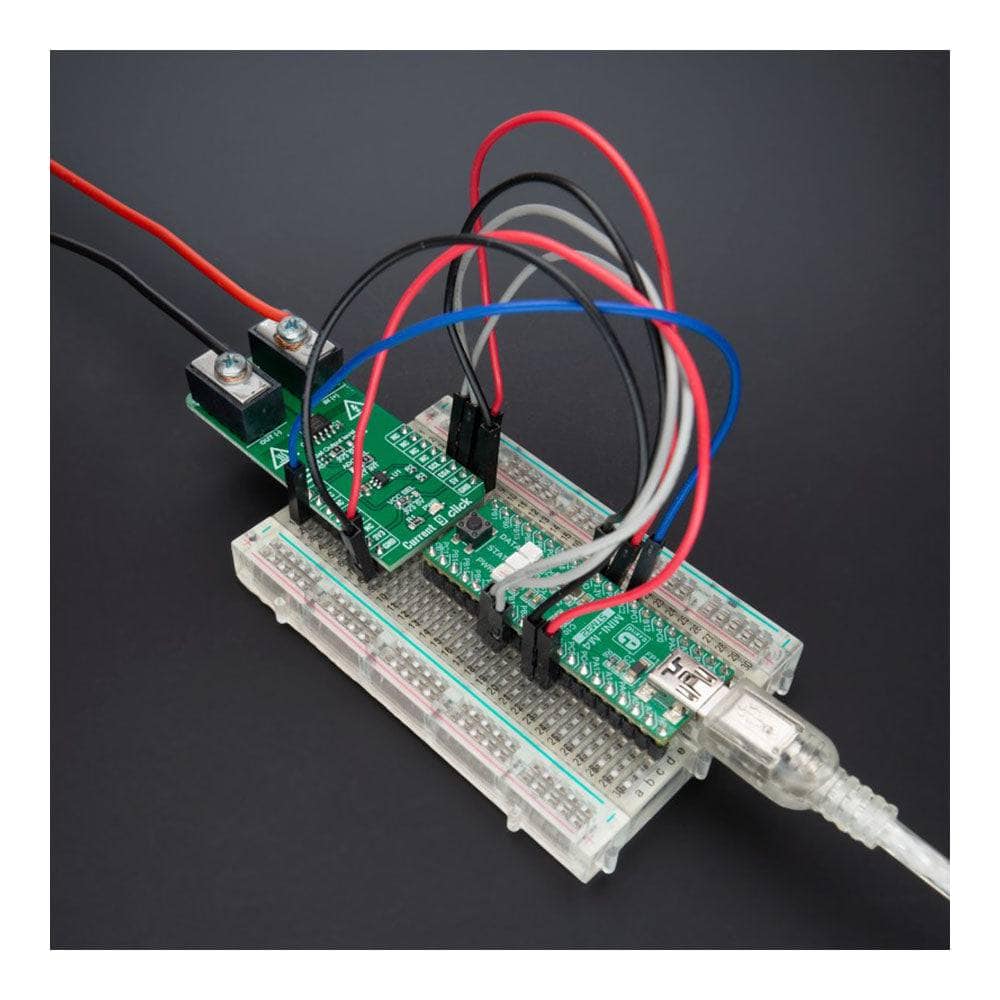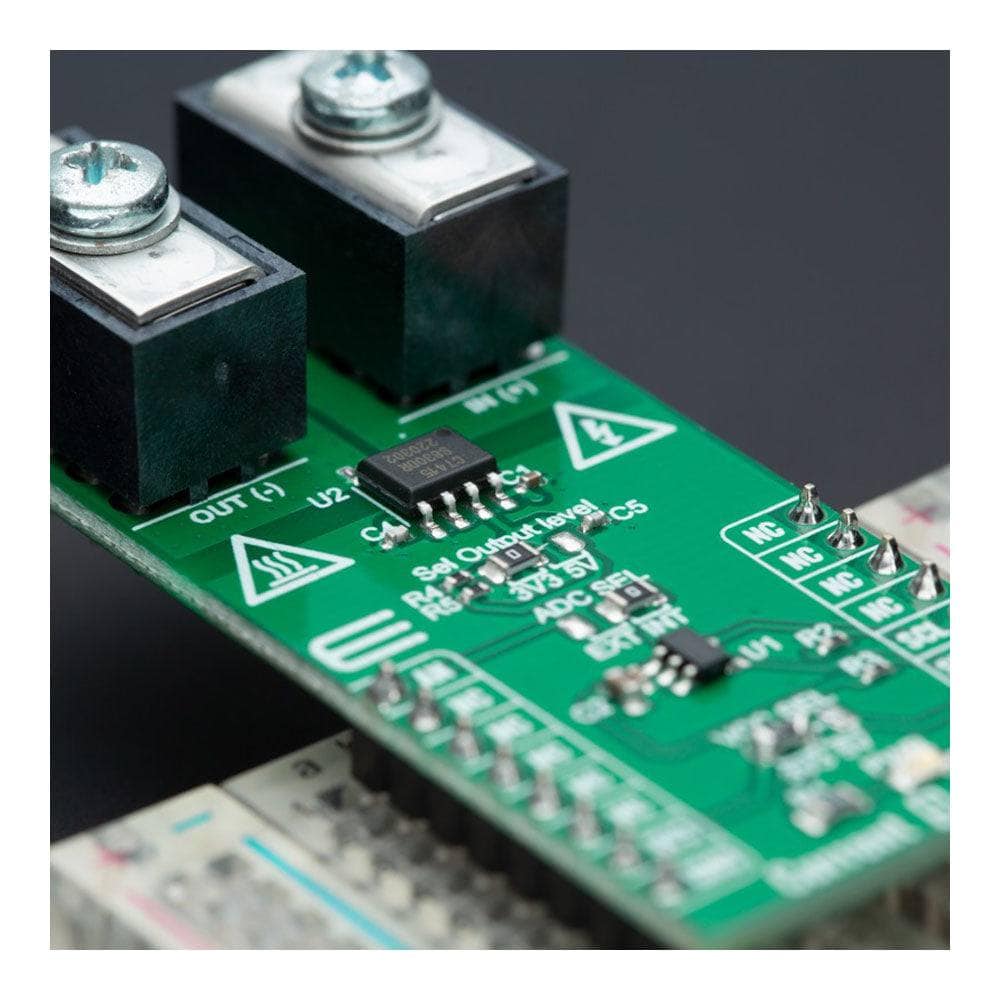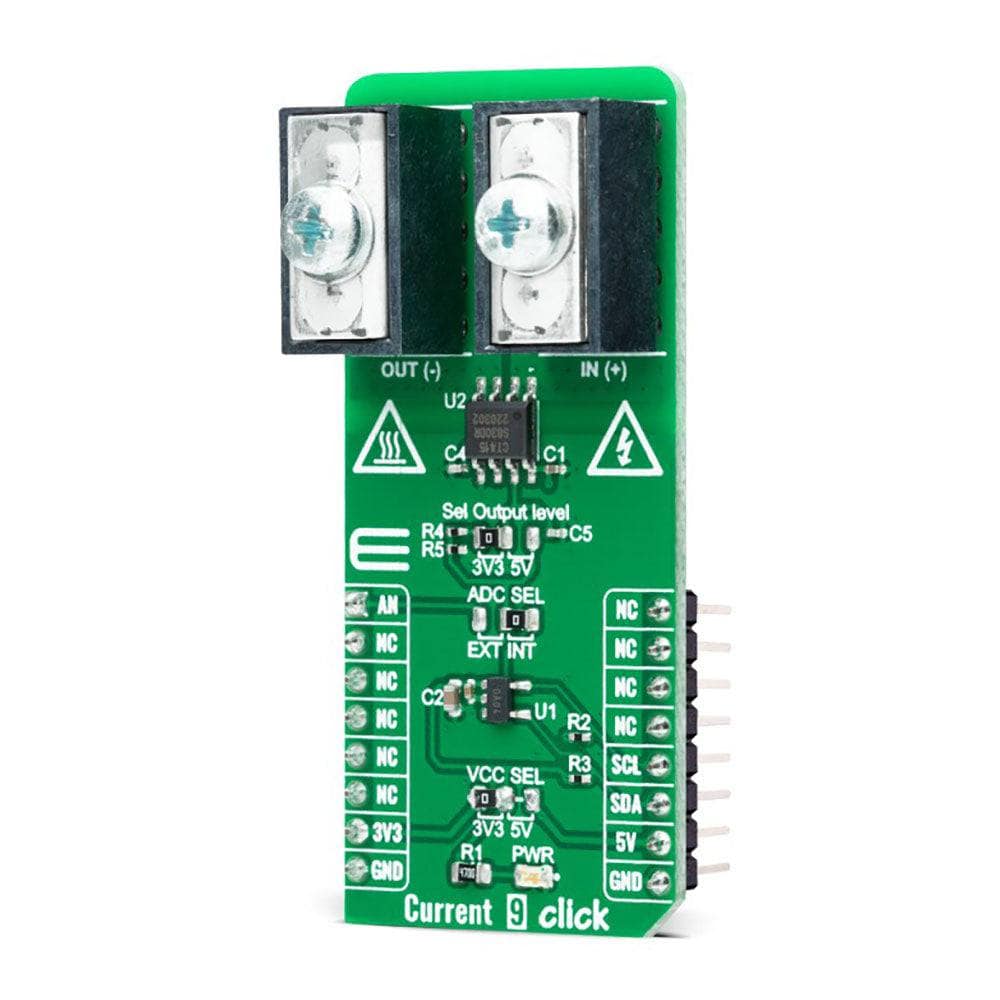
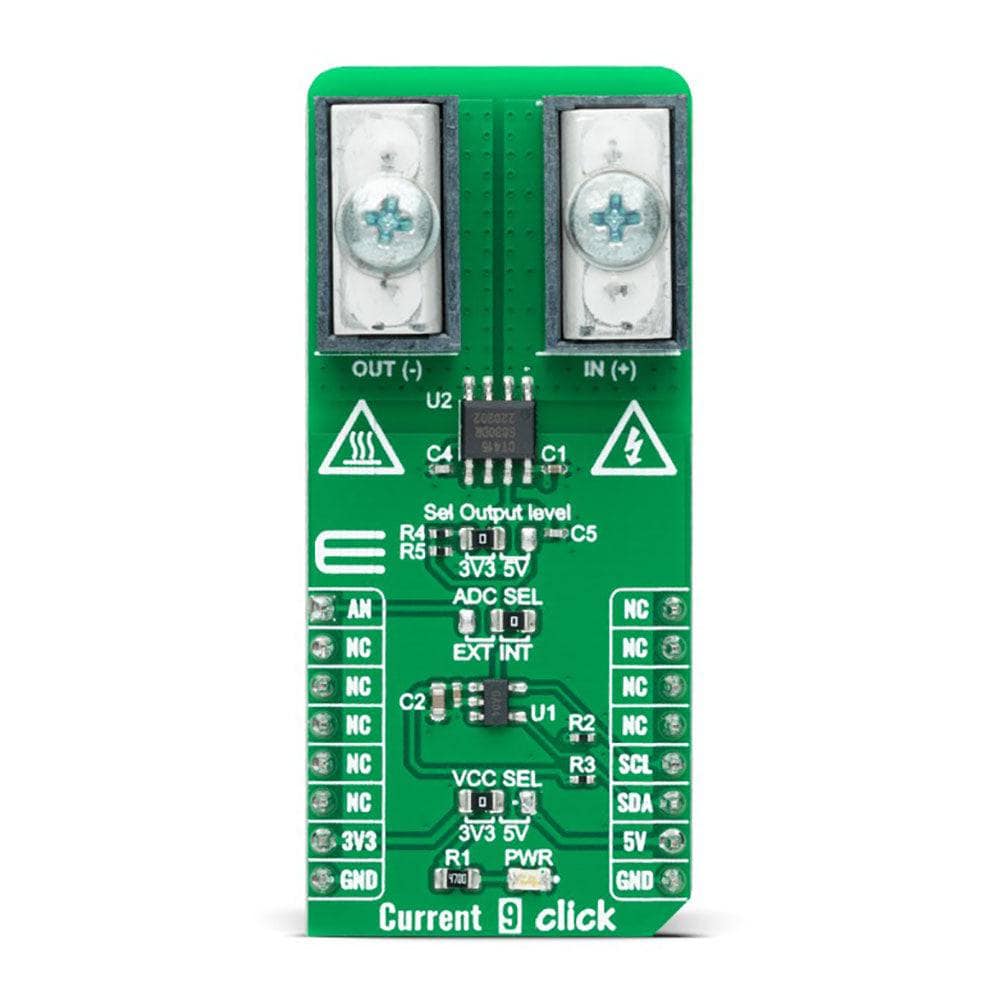
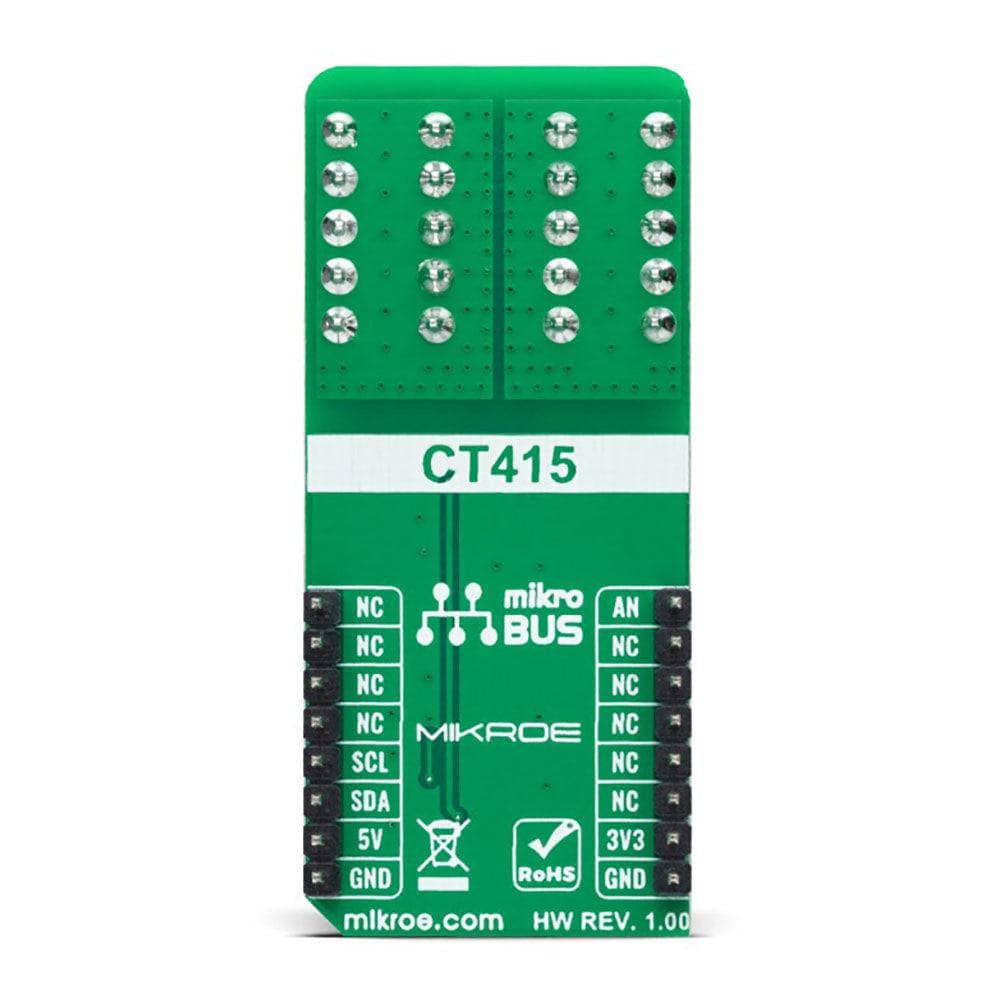
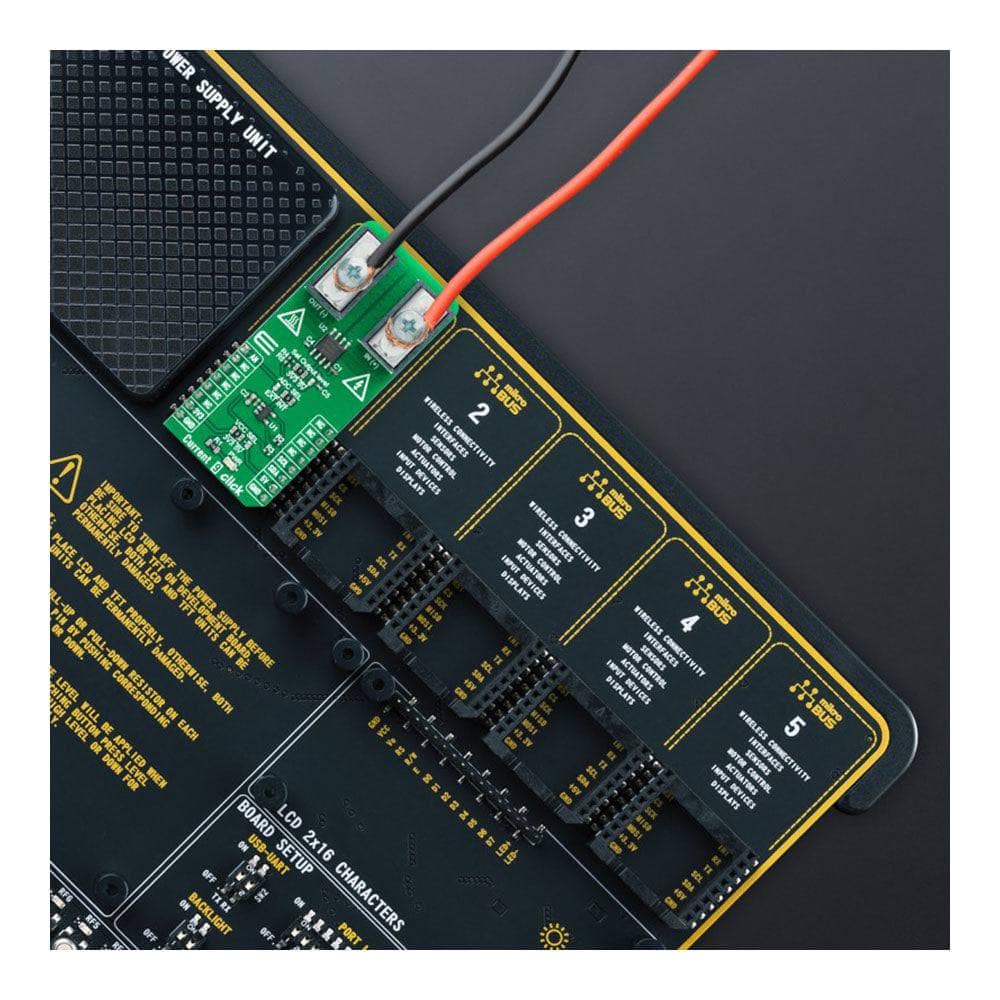
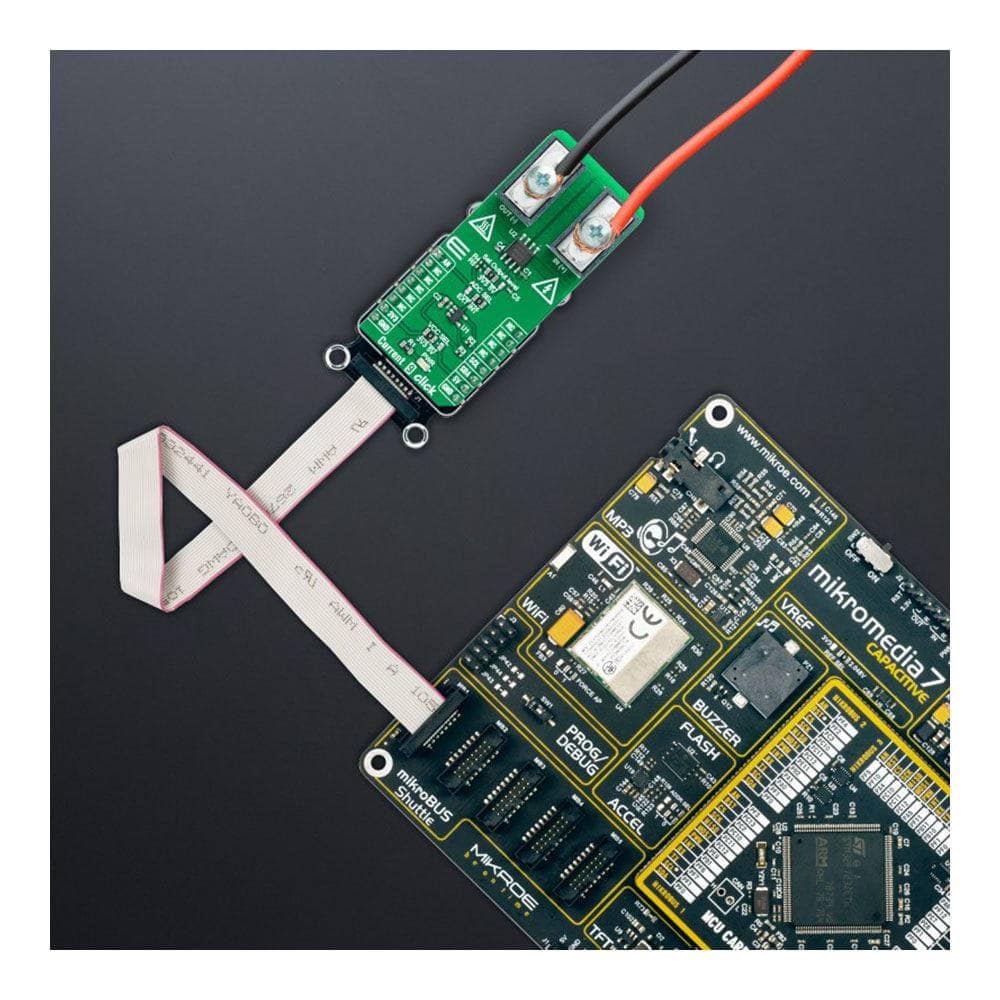
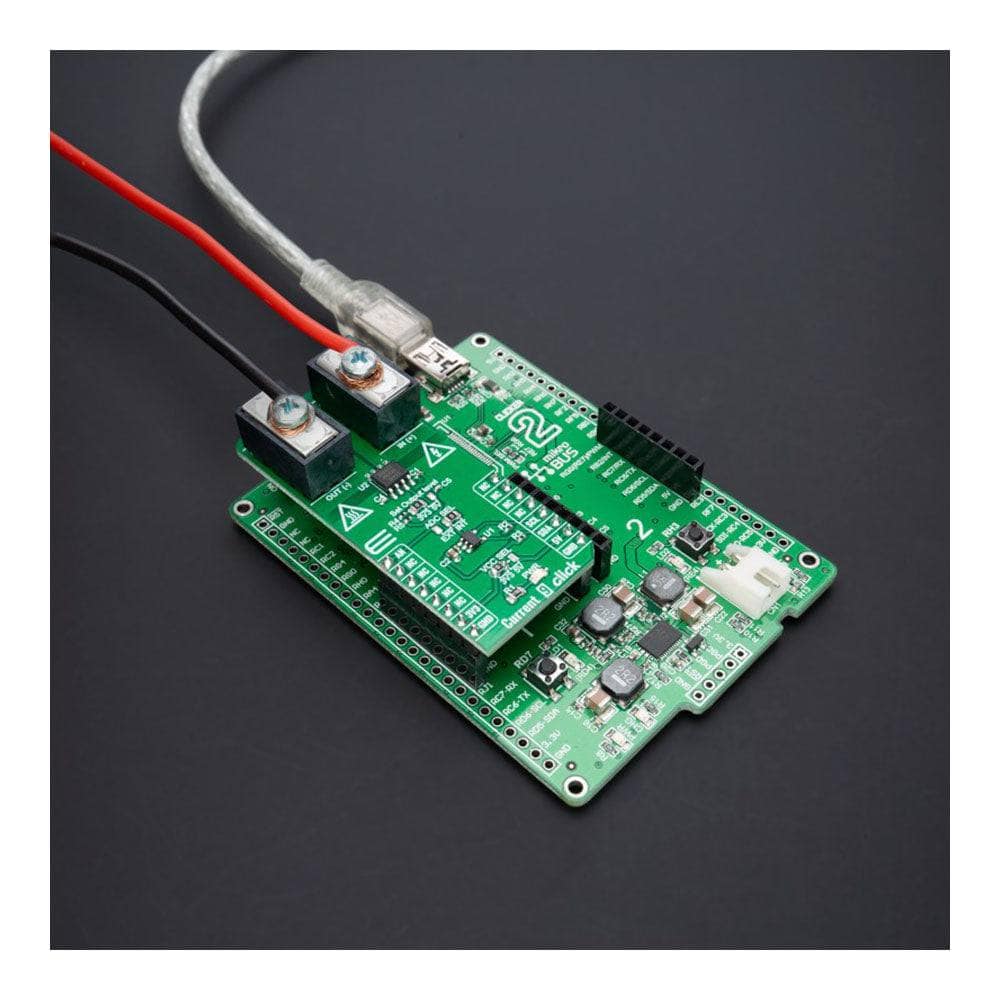
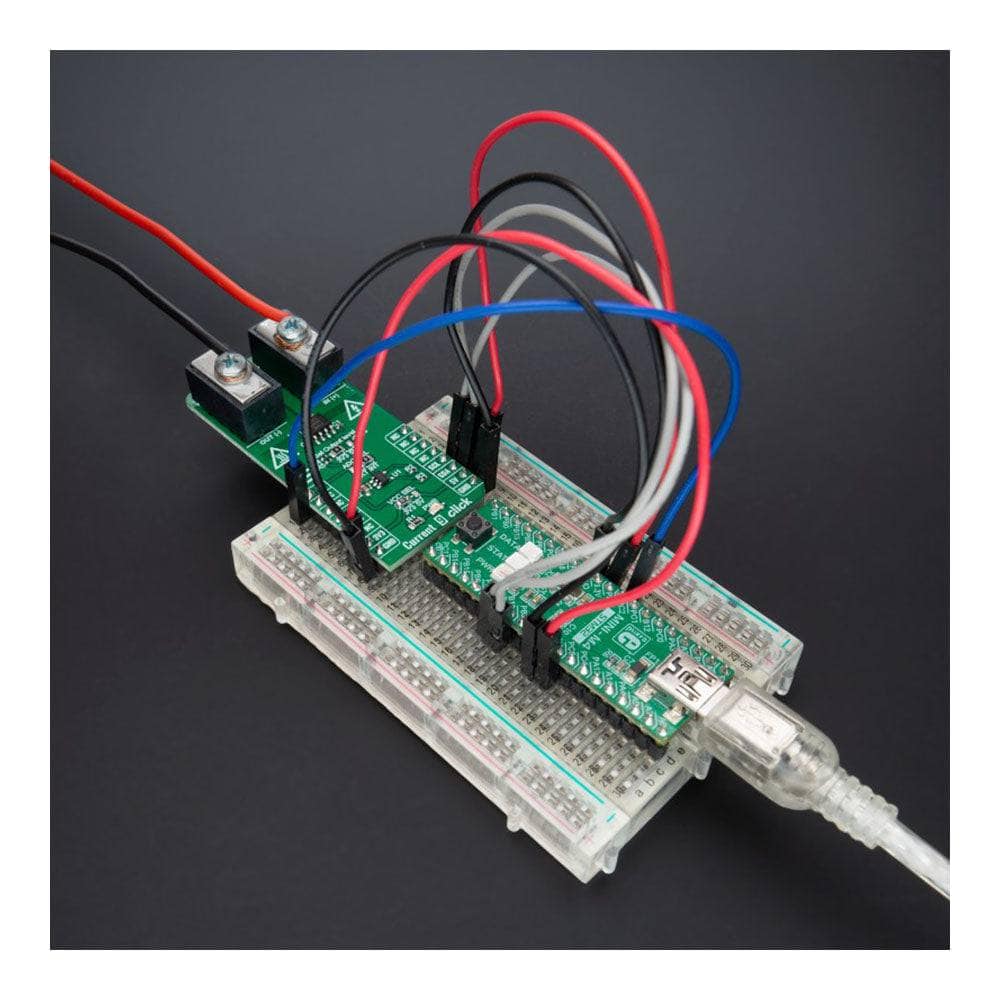
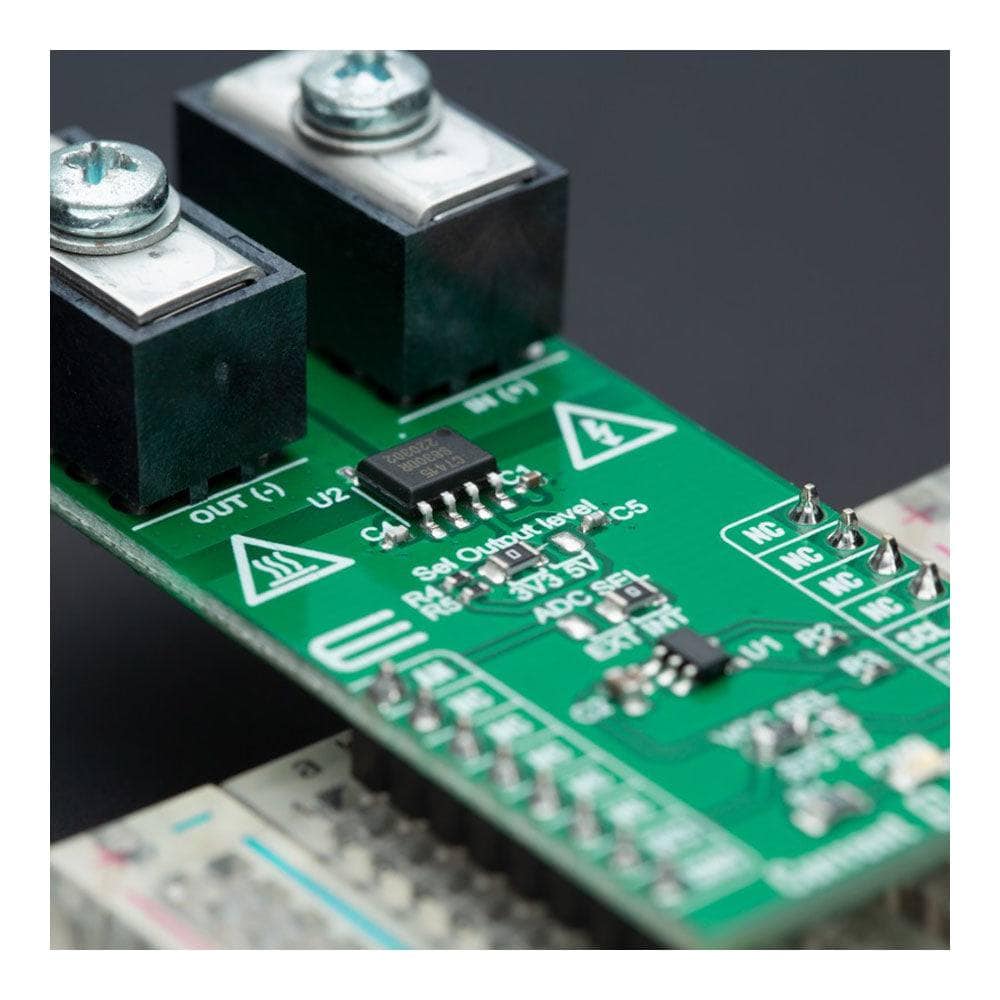
Key Features
Overview
The Current 9 Click Board™ is a compact add-on board providing a precise and accurate current sensing solution. This board features the CT415-HSN830DR, high-bandwidth and ultra-low-noise XtremeSense® TMR current sensor designed for the current range up to 30A from Crocus Technology. This sensor also features an integrated current-carrying conductor which handles rated current and generates a current measurement as a linear analogue output voltage, accomplishing a total output error of about ±1% full-scale. After that, the user can process the output voltage in analogue or digital form. This Click board™ is ideal for high-accuracy current measurements for many consumer, enterprise, and industrial applications.
The Current 9 Click Board™ is supported by a mikroSDK-compliant library, which includes functions that simplify software development. This Click board™ comes as a thoroughly tested product, ready to be used on a system equipped with the mikroBUS™ socket.
Downloads
La carte Click Board™ Current 9 est une carte complémentaire compacte offrant une solution de détection de courant précise et exacte. Cette carte est équipée du capteur de courant TMR XtremeSense® CT415-HSN830DR à large bande passante et à très faible bruit conçu pour la plage de courant jusqu'à 30 A de Crocus Technology. Ce capteur est également équipé d'un conducteur de courant intégré qui gère le courant nominal et génère une mesure de courant sous forme de tension de sortie analogique linéaire, ce qui permet d'obtenir une erreur de sortie totale d'environ ±1 % à pleine échelle. Après cela, l'utilisateur peut traiter la tension de sortie sous forme analogique ou numérique. Cette carte Click™ est idéale pour les mesures de courant de haute précision pour de nombreuses applications grand public, d'entreprise et industrielles.
La carte Click Board™ Current 9 est prise en charge par une bibliothèque compatible mikroSDK, qui comprend des fonctions qui simplifient le développement logiciel. Cette carte Click Board™ est un produit entièrement testé, prêt à être utilisé sur un système équipé du socket mikroBUS™.
| General Information | |
|---|---|
Part Number (SKU) |
MIKROE-5319
|
Manufacturer |
|
| Physical and Mechanical | |
Weight |
0.02 kg
|
| Other | |
Country of Origin |
|
HS Code Customs Tariff code
|
|
EAN |
8606027387661
|
Warranty |
|
Frequently Asked Questions
Have a Question?
Be the first to ask a question about this.

